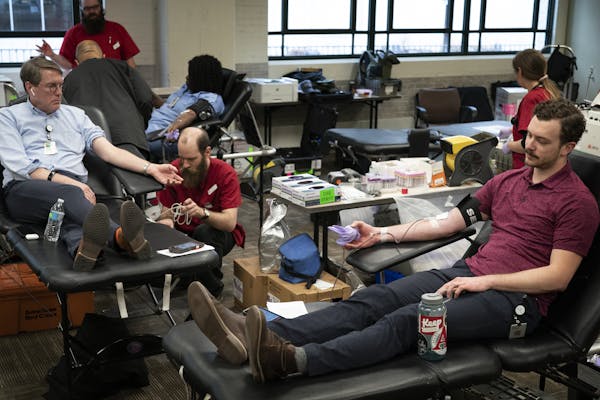More than 10,000 Minnesota health care workers have applied for unemployment assistance in the last 10 days, more than quadruple the number who applied for the financial assistance in all of last year.
The state's health care system prepares to ramp up to peak capacity in coming weeks as 15% of people who contract COVID-19 end up in the hospital and 5% require intensive care. Yet the order from Gov. Tim Walz indefinitely postponing all nonessential or elective surgeries and procedures as of Monday has reduced the revenue available to pay for care at peak levels.
The result is widespread layoffs and reduced hours for health care workers who were deemed essential to "critical" services just Wednesday, when Walz exempted them from his statewide stay-at-home order.
Thousands of those affected by the job changes work in dental care.
The Centers for Medicare & Medicaid Services says dental procedures pose one of the highest risks of transmission of the virus that causes COVID-19, because of the proximity of the clinician and the patient during procedure.
But overall, the health care workers who have applied for unemployment insurance benefits through the state also include nurses, physicians and technical health care staff who do work related to minimally invasive and elective procedures.
Between March 16 and Wednesday evening, more than 10,500 claims were filed for unemployment assistance by people who work as health care practitioners or related staff, said a spokeswoman for the Minnesota Department of Employment and Economic Development on Thursday. Fewer than 2,600 people in that category applied for assistance in 2019, records show.
Meanwhile, another 7,840 claims for assistance were filed for people in health care support roles, including home health aides, orderlies, occupational therapy assistants and dental assistants, in that 10-day span, DEED said.
Last year, fewer than 4,500 such claims were filed.
Many of the job cuts are not yet public knowledge, though a few are.
The Minnesota Nurses Association said Thursday that it has been called to negotiate over proposed nurse layoffs at Twin Cities pediatric health system Children's Minnesota.
"At this time we are in collaborative discussions with the MNA to explore options to preserve the current workforce, which is our goal in these unparalleled times," a spokeswoman said.
In Duluth, St. Luke's health system confirmed Thursday that it cut staff hours and laid off seven people, as the ban on elective surgeries and nonessential appointments left some workers idled and revenue down.
"Once the surge arrives, it will be all hands on deck," St. Luke's Chief Medical Officer Dr. Nicholas Van Deelen said at a news conference. "Until then, we're in this no man's land where we have to be very good stewards of the resources we have."
Duluth's largest employer, Essentia Health, is looking at who can be put on administrative leave before an abundance of work is expected.
"If we don't have money to pay people to be here when we really have the surge, that's going to be creating problems," said Dr. Jon Pryor, president of Essentia's east market. "All of our attention needs to be on preparing for the surge."
HealthPartners, which provides hospital and clinic care as well as insurance services, acknowledged some staff changes Thursday.
"As we take steps to adjust our care practices to prepare and help slow the spread of COVID-19, some colleagues have experienced changes to their work," spokesman David Martinson said. "These changes could look like reduced hours, temporary movement to another department or the use of time off or other leave practices. We have not done any layoffs at this time."
Mary Turner, president of the Minnesota Nurses Association and an intensive care nurse for COVID-19 patients at North Memorial Health Hospital in Robbinsdale, said the changes seem motivated by hospitals being forced to stop elective procedures like orthopedic surgeries and colonoscopies.
But it would be shortsighted to lay off knowledgeable hospital employees just as demand for hospital care is poised to spike, she said.
Nurses trained for elective care and same-day surgery would need to do some training to go back to work on an acute care hospital floor, but doing so would be a good investment.
"Rather than think about laying them off, they need to just do a little bit of retraining, like letting them know about charting because charting is different in those outpatient departments," Turner said. "It's totally doable, and that is what they should be spending their time and energy and money on."
Joe Carlson • 612-673-4779
Brooks Johnson • 612-673-4229

Want to share info with the Star Tribune? How to do it securely

'Safe recovery sites' would offer syringes, naloxone and more to people using drugs. The plan could be in peril.
New Minnesota GOP leaders seek peace with party's anti-establishment wing

Who is Republican Lisa Demuth, Minnesota's first House speaker of color?

